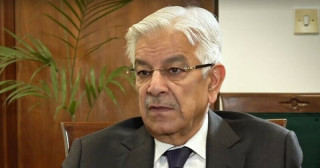WatanDost
Chief Minister (5k+ posts)
Tuesday, August 02, 2011Celebrating Buddhist Heritage of Pakistan
BUDDHIST HERITAGE OF PAKISTAN -- NEW EXHIBITION OPENS AUGUST 9
Asia Society in New York
Melissa Chiu
Beginning August 9, Asia Society Museum presents a landmark exhibition of Buddhist sculptures, architectural reliefs and works of gold and bronze from the Gandhara region of Pakistan, most never exhibited before in the United States.
Against a backdrop of political turmoil and tensions in the U.S.-Pakistan relationship, securing these loans has been an extraordinary achievement, says Asia Society Museum Director MELISSA CHIU. We are extremely grateful to our colleagues at the Lahore Museum in Lahore and the National Museum of Pakistan in Karachi, and to countless individuals both in Pakistan and the U.S. for their efforts on behalf of the exhibition. Despite images of Pakistan as a place of violent extremism, the region has an ancient tradition of tolerance and pluralism as evidenced by the survival of these spectacular examples of Gandharan art. Through this exhibition, Asia Society aims to provide new contexts for looking at the arts and culture of Pakistan today, in keeping with our long history of programming about and engagement with the region and following our 2009 exhibition Hanging Fire: Contemporary Art from Pakistan.
The new exhibition The Buddhist Heritage of Pakistan: Art of Gandhara shows the rich artistic heritage of Gandhara as a geographical and historic region and as a particular style of art. The works reveal the complex cultural influences -- from Scytho-Parthian to Greco-Roman traditions -- that fed the extraordinary artistic production of this region from the first century B.C.E. through the fifth century C.E.
[HI]Click here to view the exhibition website.
[/HI]The Buddhist Heritage of Pakistan: Art of Gandhara will be on view Aug. 9 to Oct. 30 at the Asia Society Museum, 725 Park Avenue at 70th Street in New York. To arrange coverage and interviews, feel free to contact our press office at 212-327-9271 or [email protected]
Long-Delayed Show of Buddhist Art From Pakistan Is to Open - NYT
Timeline
Maps



BUDDHIST HERITAGE OF PAKISTAN -- NEW EXHIBITION OPENS AUGUST 9
Asia Society in New York
Melissa Chiu
Beginning August 9, Asia Society Museum presents a landmark exhibition of Buddhist sculptures, architectural reliefs and works of gold and bronze from the Gandhara region of Pakistan, most never exhibited before in the United States.
Against a backdrop of political turmoil and tensions in the U.S.-Pakistan relationship, securing these loans has been an extraordinary achievement, says Asia Society Museum Director MELISSA CHIU. We are extremely grateful to our colleagues at the Lahore Museum in Lahore and the National Museum of Pakistan in Karachi, and to countless individuals both in Pakistan and the U.S. for their efforts on behalf of the exhibition. Despite images of Pakistan as a place of violent extremism, the region has an ancient tradition of tolerance and pluralism as evidenced by the survival of these spectacular examples of Gandharan art. Through this exhibition, Asia Society aims to provide new contexts for looking at the arts and culture of Pakistan today, in keeping with our long history of programming about and engagement with the region and following our 2009 exhibition Hanging Fire: Contemporary Art from Pakistan.
The new exhibition The Buddhist Heritage of Pakistan: Art of Gandhara shows the rich artistic heritage of Gandhara as a geographical and historic region and as a particular style of art. The works reveal the complex cultural influences -- from Scytho-Parthian to Greco-Roman traditions -- that fed the extraordinary artistic production of this region from the first century B.C.E. through the fifth century C.E.
[HI]Click here to view the exhibition website.
[/HI]The Buddhist Heritage of Pakistan: Art of Gandhara will be on view Aug. 9 to Oct. 30 at the Asia Society Museum, 725 Park Avenue at 70th Street in New York. To arrange coverage and interviews, feel free to contact our press office at 212-327-9271 or [email protected]
Long-Delayed Show of Buddhist Art From Pakistan Is to Open - NYT
Timeline
| Circa 9th century BCE | First reference to Gandhara in the tenth book of the Rigveda |
| 522486 BCE | Reign of Darius I, king of Persia |
| 518 BCE | Gandhara becomes a Persian province |
| 5th century BCE | Life of Siddhartha Gautama, the historic Buddha |
| 327326 BCE | Invasion of Alexander the Great, Greek-Macedonian king, into Gandhara and northwest India |
| 321circa 297 BCE | Reign of Chandragupta Maurya, founder of the Mauryan Empire |
| 312281 BCE | Reign of Seleucus I Nicator, founder of the Seleucid Empire |
| 312 BCE | Gandhara is part of the Seleucid Empire |
| 305 BCE | In exchange for 500 war elephants, Gandhara and Arachosia become part of the Mauryan Empire |
| 268240 BCE | Reign of Ashoka, ruler of the Mauryan Empire, supporter of Buddhism |
| Circa 250 BCE | Foundation of the Greco-Bactrian Empire |
| 247 BCE | Foundation of the Parthian Empire |
| Circa 180 BCE | Conquest of Gandhara and northwest India by the Greco-Bactrians |
| Circa 140 BCE | Invasions of the Scythians from Central Asia (Sakas, Yuezhi, and others) |
| 1st century BCE | Foundation of the Indo-Scythian dynasty |
| Early 1st century CE | Kingdom of Odi in the Swat valley |
| Mid-1st century | Foundation of the Kushan Empire in Gandhara by a Yuezhi tribe |
| 127-150 | Reign of Kanishka I, Kushana ruler; first heyday of Buddhist art in Gandhara |
| 232 | Foundation of the Iranian Sasanian dynasty in Afghanistan; the so-called Kushanshahs become viceroys |
| Circa 320 | Foundation of the Gupta Empire in North India |
| 400 | Chinese pilgrim monk Faxian in Gandhara |
| 630 | Chinese pilgrim monk Xuanzang in Bamiyan, makes a record of the giant buddhas |
| 861900 | Islamic Saffarid dynasty in Afghanistan |
| 1008 | Gandhara comes under the reign of the Muslim Ghaznavids |
Maps

The Kushan Empire at the time of Kanishka I (ca. 127150 CE) and the most important international trade routes.

Current political map of the region, highlighting Gandhara.

The most important archaeological sites in Gandhara.Dotted line represents approximately the Line of Control in Jammu and Kashmir agreed upon by India and Pakistan, as promulgated in the 1972 SMLA Agreement. The final status of Jammu and Kashmir has not yet been agreed upon by the parties. Maps designed by Dirk Fabian, ingraphis.de, Kassel, Kunst- und Ausstellungshalle der Bundesrepublik Deutschland, Bonn.
































